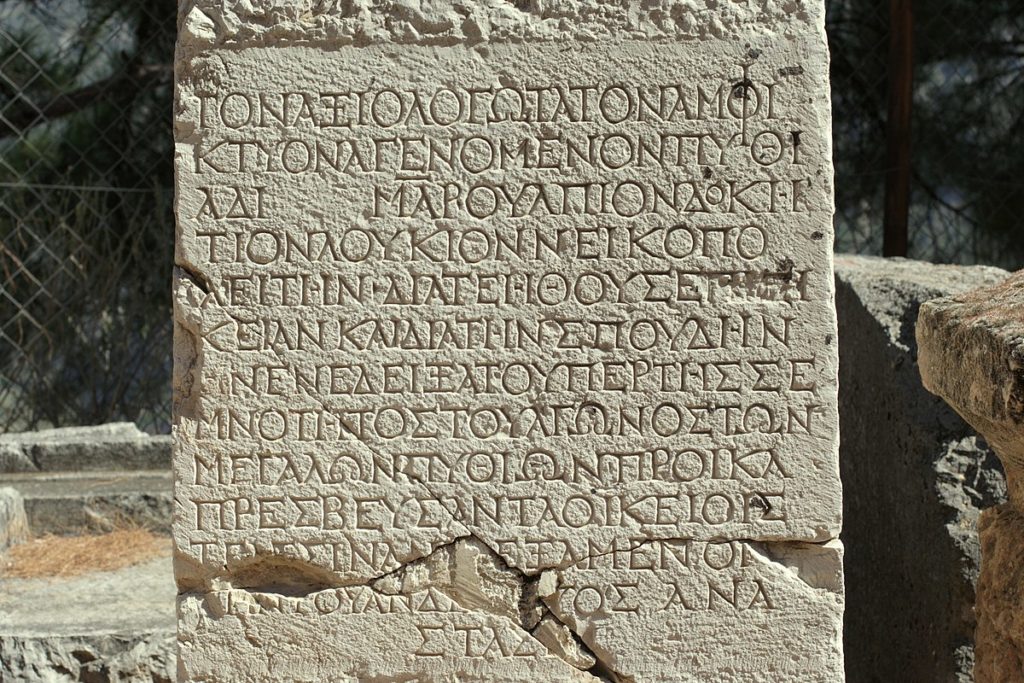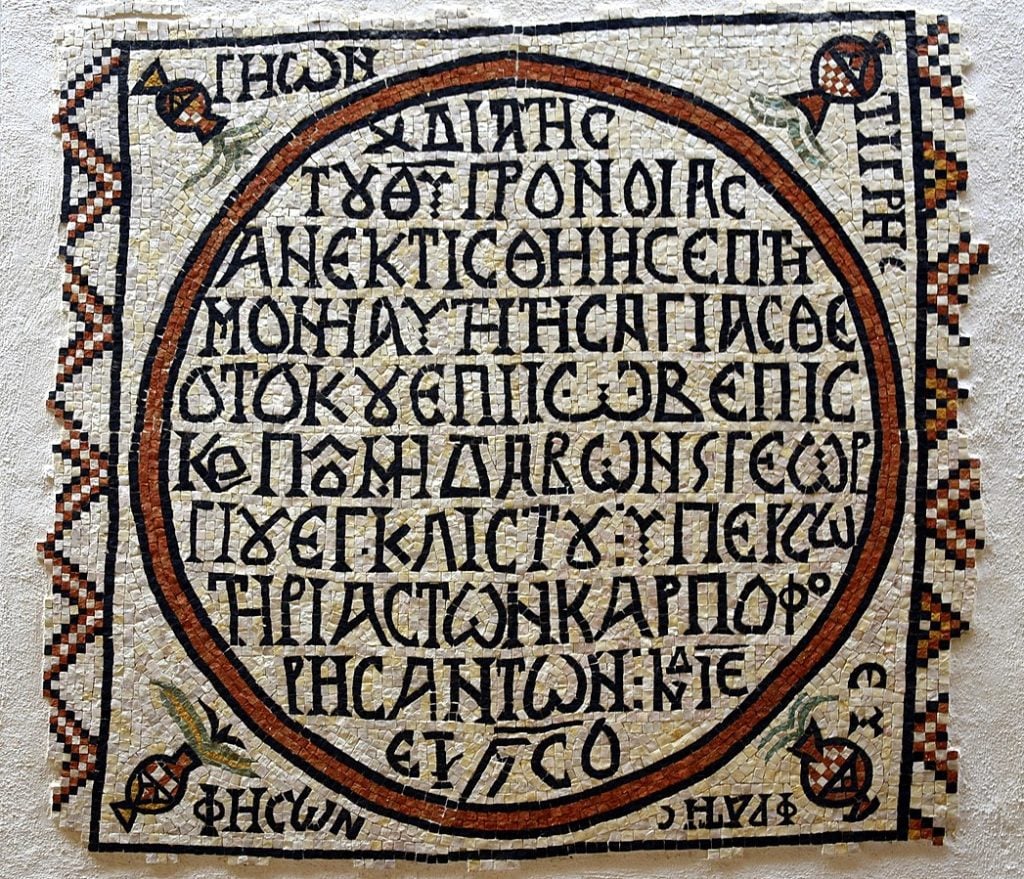
Middle Greek, also known as Medieval Greek, is the phase of the Greek language that bridges the Classical with the Modern Greek variety spoken today.
Middle Greek flourished and developed during the Eastern Roman Empire from the fourth to the fifteenth century AD. This period was a critical time that served as the link that connected the ancient scripts of the famous Classical thinkers with the vibrant vernacular of modern Greece.
Hence, one can say that studying the evolution of Middle Greek unlocks our understanding of the complex evolution of the Greek language from its very beginning to today’s unique linguistic features.
A historical overview of the Byzantine Empire and Middle Greek
The Byzantine Empire was at the heart of the development of the Middle Greek language. It was during this historical period that the Greek language and culture thrived and conquered the Roman Empire itself. This happened, of course, against a backdrop of significant political and societal changes.
The fall of the Western Roman Empire, for example, changed the fate of the Greek language forever. The fall of Rome elevated Greek from a purely scholarly and administrative language to the lingua franca of the entire Eastern Mediterranean. It was a region which was saved from the early death of its Western counterpart.
This period of profound transformation also offered a fertile ground for the linguistic evolution of Middle Greek. It is the reason why this form of the Greek language mirrors the complex relations of the Roman Empire with neighboring civilizations of the then-known world.
The linguistic journey from ancient to modern Greek is marked significantly by this transitional phase of Medieval Greek. By the seventh century AD, the Greek language had already emerged as the only language of administration and governance within the Roman Empire. It was a fundamental shift from the previous Latin era of the Western part and a brand new beginning—that of the Byzantine Greek.
This linguistic transition did not happen overnight. The transition took place gradually. Many believe that the most pivotal moment was the relocation of the Roman Empire’s political heart to Constantinople in 330 AD. The transfer of power from the West to the East shifted the axis towards the Greek-speaking part of the empire rather than the Latin-speaking West. Additionally, the empire’s division in 395 AD brought Greek language and culture even closer to the forefront of the newly-established Eastern Roman Empire.
It was a profound change for the Greek language itself. The influence of the Hellenistic period, initiated by the conquests of Alexander the Great, had already altered the pronunciation and syntax of the Greek language, as new linguistic elements began enriching the spoken language of the region. The Macedonian king’s conquest of the East also spread the language across Anatolia, the Middle East, and beyond, helping to shape the changes of Middle Greek.
Linguistic characteristics of Middle Greek
The journey of Middle Greek was defined by its dynamic linguistic changes. These changes established the departure from the Classical structures of ancient Greek, also known as Koine Greek, towards the more accessible forms of the Modern Greek that is spoken today.
The period is marked by significant phonetic simplifications as well as morphological innovations. Additionally, during this time, we see the emergence of new syntactical patterns that did not exist in ancient Greek.
As the Byzantine Empire extended its territories, the language witnessed the rise of many different dialects with their own, distinctive characteristics. This included the primary differentiation of the language and the gradual drift between scholarly Byzantine Greek and the more colloquial vernaculars spoken by the people across the empire. These slow and yet profound changes played a crucial role in shaping the future of this rich and beautiful language.

The world of Byzantine literature and Middle Greek texts
The literary landscape of the Byzantine Empire was quite diverse and rich. It spanned from important religious texts, historical narratives, and poetry all the way to administrative and legal documents as well as scholarly texts.
The diverse literature of Middle Greek gives us an excellent view of the issues that the average resident of the empire was dealing with in his everyday life. It also showed us the intellectual and academic depths of the more well-educated part of Byzantine society.
As for its religious aspect, it offers us a great view into the spiritual and artistic expressions of its Christian communities. This period also played a fundamental role in the preservation of ancient Greek literature, something that could have never come about without the tireless Byzantine scholars, who studied and preserved classical works.
Of course, this was not simply a copy-paste procedure. On the contrary, it was an active cultural exchange between different periods of Greek history. This new linguistic landscape led to the creation of new works that reflected the new Byzantine themes and linguistic styles, something that profoundly enriched the Greek literary tradition.
The transition from Middle to Modern Greek
The transition from Middle to Modern Greek did not happen overnight. It was not an abrupt event but a slow process that showed the enduring nature of the Greek language as a whole—and of Middle Greek in particular.
The linguistic reforms and innovations that took place during these centuries created the fertile ground for the Modern Greek language to take its final shape. With its phonology, grammar, and vocabulary deeply rooted in the medieval past, the modern Greek language is the direct offspring of this medieval era.
This is also one of the fundamental reasons why the study of Middle Greek is so crucial for one’s understanding of the continuum of the Greek language through the centuries. It truly highlights its own significance and the profound effect it had in the broader European cultural and historical landscape of the previous centuries.
The enduring legacy of Middle Greek
Middle Greek will continue to hold a prominent place in the broader picture of the Greek language as a whole.
It acts as a bridge between the Koine Greek of the Hellenistic and Roman times with the vernacular version of the modern era, also known as “demotic,” the language of the people.
The legacy of Middle Greek, which has, thankfully, been preserved through literature and consistent scholarly interest, will continue to enrich our understanding of this crucial period of Greek and Roman history.
See all the latest news from Greece and the world at Greekreporter.com. Contact our newsroom to report an update or send your story, photos and videos. Follow GR on Google News and subscribe here to our daily email!



